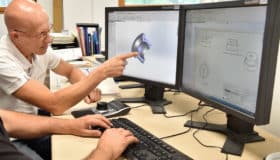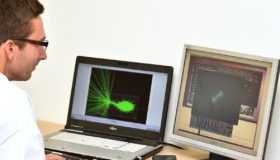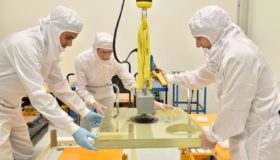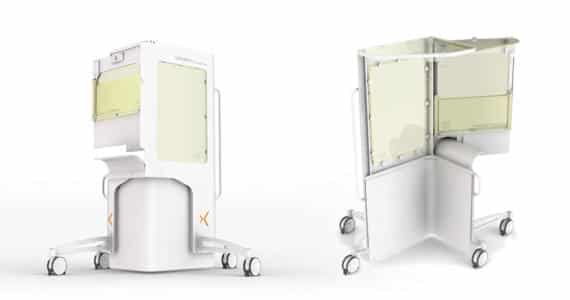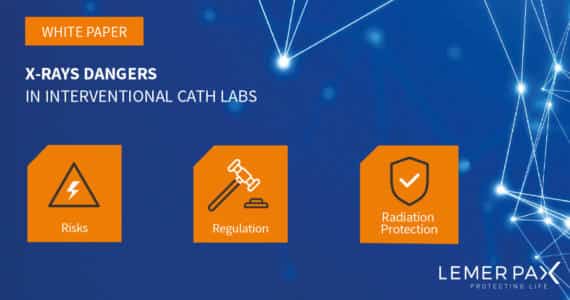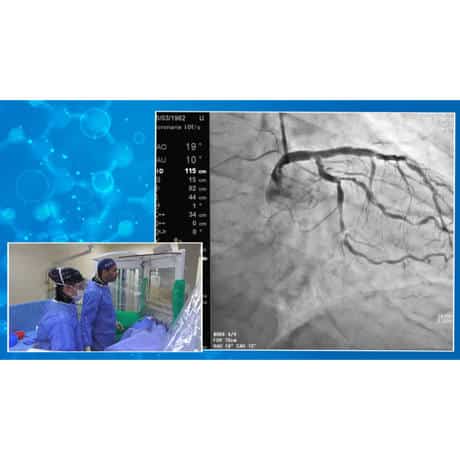
Cathpax® AIR radiation protection cabin in the spotlights during a complex angioplasty Live Case on the initiative of the Italian Society of Interventional Cardiology (GISE).
Interventional Cardiologists are increasingly exposed to health-threatening X-rays
In the last few years, Interventional Cardiology has experienced exceptional growth due to the comfort brought to the patient because of its minimally invasive nature, bringing a significant increase in the number and complexity of procedures (TAVI, MitraClip, CTO, pulmonary valvulation…). The corollary of these advances is, unfortunately, the increasing exposure of doctors to X-rays, threatening their health. For example, A. Roguin[1], who studied a cohort of interventional physicians who developed a brain carcinoma, suggests a correlation between the position of the C-arm and brain tumor location noting a left-sided malignancy in 85% of cases (to find out more, download our white paper).
“The system is really easy to use and can be used for simple and complex procedures (for instance CTO).
Dr Bernardo Cortese, Head of Cardiology department of San Carlo Hospital in Milan
I recommend to use the Cathpax® AIR cabin in complex and long procedures because it gives to the operator an optimal protection, and it prevents from wearing protection clothes”
Today, interventional physicians are aware that PPE & CPE (Personal and Collective Protective Equipment) only partially and insufficiently protect them from X-rays radiations generated by the tube and scattered radiations from the patient, and they are looking for new solutions in terms of radiation protection in cath labs.
A unique radiation protection solution developed by the French leader in radiation protection equipment
In order to provide an answer to this critical need, Lemer Pax had been working in collaboration with Pr. Patrice Guérin (Nantes University Hospital / France) and Pr. David Keane (St Vincent University Hospital / Dublin / Ireland) to design a unique and disruptive solution: a new generation of radiation protection cabins meeting the complex specifications of interventional cardiology: the Cathpax® AIR. Indeed, according to first dosimetry preliminary results[2], this cabin allows a drop of more than 98% of incident ambiant dose rate and is adapted – while maintaining the integrity of the doctor’s act – to the most extreme incidences of the angiograph, the multiple patient morphologies and the various working habits.
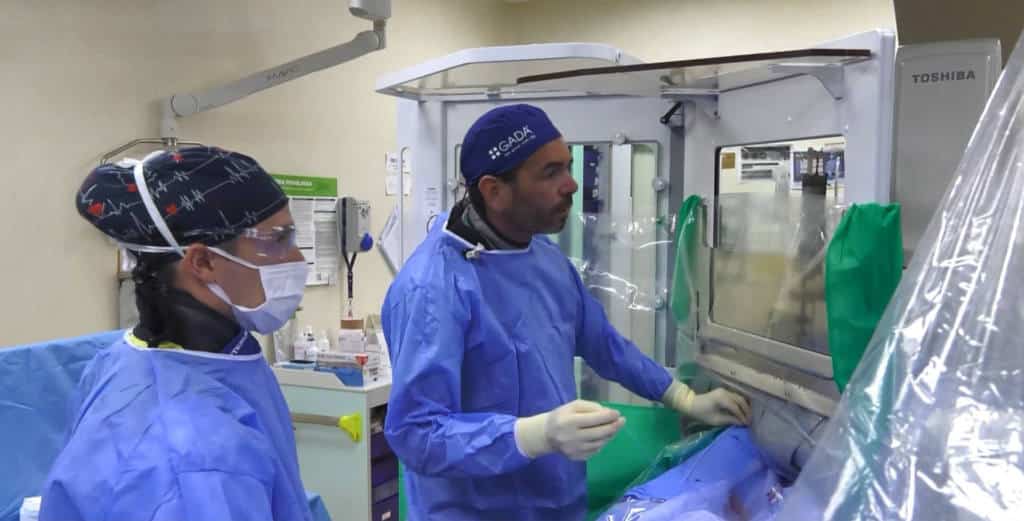
Live proof from Milan
On the 3rd of July, in this period of health crisis, the Italian Society of Interventional Cardiology (GISE) made the strong choice to address the topic of protection in interventional cardiology – protection against COVID but also against radiation. As a highlight of this event, the Milanese cardiologist, Dr. Bernardo Cortese[3], Head of Cardiology department of San Carlo Hospital in Milan, performed out a Live Case with the Cathpax® AIR cabin during a very complex multi-vessel procedure including bifurcation stenting with high level of artery calcification.
His verdict is crystal clear: “The system is really easy to use and can be used for simple and complex procedures (for instance CTO). I recommend to use the Cathpax® AIR cabin in complex and long procedures because it gives to the operator an optimal protection, and it prevents from wearing protection clothes”.
Indeed, behind the Cathpax® AIR radiation protection cabin, the doses taken by the practitioner are undetectable, even for the longest and most complex procedures (only 2 µSv over a 1h30-long procedure). Moreover, the cabin guarantees the protection of the extremities, the left side, the skull and the eyes which are not or only partially protected today. While the world of interventional cardiology is adopting it, the cabin can also provide an optimal radiation protection solution for interventional neurologists and radiologists as well as electrophysiologists.
Click here to download the press release.
[[1]] Roguin A., Radiation and your Brain: possible measures to reduce radiation in your cath lab. Endovascular Today Vol. 15, No. 8 August 2016.
[[2]] 2017, P. Guerin, V. Letocard, T. Manigold, A. Etemadi, F. El Haber
Dosimetry measured during 13 coronarographies / Dosimeters placed on practitioner’s chest
[[3]] Important member of GISE board, Dr. Bernardo Cortese is also an author of many publications on Drug Eluting Balloons, an investigator in many Italian and International studies, and is also being involved in bioresorbable vascular scaffold RAI Italian clinical trial.
